How to Cope Up with Dermatitis in Ayurveda?
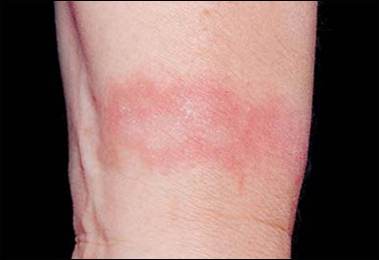
What is Dermatitis?
The word Dermatitis means the inflammation of the skin which occurs in many forms and has many causes which usually involves an itchy rash on the swollen and red skin. It is not a contagious condition but a person suffering from it may feel over-conscious and uncomfortable. It may occur in different parts of the body.
The Most Common Types of Dermatitis include:
- Atopic Dermatitis: This condition is commonly known as Eczema. It usually begins in infancy. There are red and itchy rashes which commonly occur at the sites where the skin flexes such as at elbows, behind the knees or in front of the neck.
- Contact Dermatitis: It occurs when the skin comes in contact with the substances that irritate the skin such as poison ivy, essential oils, soaps containing excessive chemicals etc. This red rash may burn, sting or itch and there is a possibility of developing blisters.
- Seborrheic Dermatitis: In this type of dermatitis, there is a formation of scaly patches, skin becomes red and dandruff occurs. This type affects the oily areas of the body such as face, back, upper chest. It equally affects infants and in infants, this condition is known as cradle cap.
What are the Causes of Dermatitis?
- It may be caused due to a number of health allergies, irritants or genetic factors.
- Dry skin, dysfunctional immune system, environmental conditions etc. can cause atopic dermatitis.
- Certain irritants such as preservatives in the creams, perfumes, cosmetics can cause contact dermatitis.
- Seborrheic Dermatitis can be caused by yeast that is present in the oil secretion on the skin. This condition tends to come and go depending on the seasonal changes.
What is the Ayurvedic Perspective on Dermatitis?
All skin disorders are characterized under Kushtarog. The clinical presentation of Vicharchika is similar to dermatitis in dermatology.
It is considered as the Raktpradoshaj Vikara with the involvement of three doshas with the predominance of Kapha dosha.
In Ayurveda, it is mentioned that virudhh ahaar (incompatible food habits) leads to incomplete digestion and fermentation inside the body. Due to this, there is the formation of Ama (endotoxins) leading to tridoshdushti and produce shaithilya in the Twak, Mamsa, Rakta and Ambu. The main factor for dermatitis is Agnimandhya.
According to classical texts, it has cardinal symptoms such as:
- Kandu (excessive itching)
- Shyavata (discolouration)
- Pidika (vesicle/boil/pustule formation)
- Bahusrava (profuse oozing)
- Ruja (pain)
- Rukshuta (excessive dryness)
As enumerated in Charak Samhita, the prodromal symptoms include:
- Loss of touch sensation
- Excessive or no perspiration
- Appearance of rashes, itching, piercing pain
- Deranged complexion
Herbs for Ayurvedic Treatment of Dermatitis
Ayurveda recommends bitter tasting herbs with blood purifying and skin soothing properties for the treatment of dermatitis. Single herbs that are useful for the treatment of Dermatitis are:
1. Neem (Azadirachta indica)
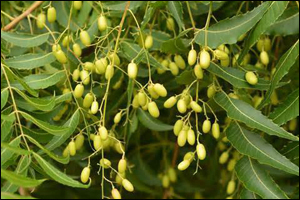
Neem is considered as the best herb for all dermatological conditions. Due to its anti-inflammatory properties, it can reduce itchiness and redness. It is categorized under Kandughana (group of herbs that are useful in relieving itching) and tiktaskandha (group of bitter tasting herbs) by Master Charak. It helps to heal and cleanse the wounds quickly and useful in numerous skin diseases.
नायुणं नबजं ततं कृमकुठकफणतु ॥ ६० ॥
(Reference: Ashtang Hridyam Sutrasthanam, Chapter No. 5, Shlok No. 60)
Meaning: According to this shloka, neem oil is not very hot in potency, but because of bitter, anti-microbial properties, it is useful in skin diseases and mitigates Kapha dosha.
How to Use?
- Neem lotion prepared from neem leaves can be applied on the affected areas.
- Add a spoon of neem powder to a bucket of hot water and use this water for bathing.
2. Haridra (Curcuma longa)
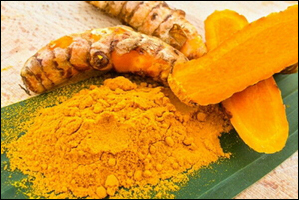
Turmeric has anti-bacterial, anti-viral, anti-protozoan and broad spectrum anti-biotic property as well. The anti-bacterial and anti-inflammatory properties of turmeric can work wonders for skin problems. The active ingredient of turmeric is Curcumin which has anti-bacterial and bactericidal properties. It is considered as an excellent home remedy for all types of dermatitis especially seborrheic dermatitis and it can be used both internally and externally for dermatitis.
How to Use?
- Mix 100 ml neem oil, 100 ml sesame oil and 50 gm turmeric powder and apply this mixture on the affected areas.
- Dusting the powder of turmeric is very useful in reducing excessive secretion and oozing.
3. Amla (Emblica officinalis)
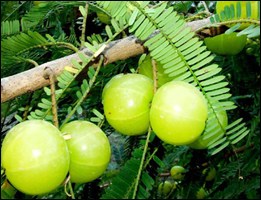
For over thousands of years, Ayurveda has described amla as one of the skin friendly fruits.
- Harmful UV radiations can damage the layers of skin which is known as photo aging. Amla is considered as one of the best anti-oxidants and reduces this problem due to its free radical scavenging property and balances all the three doshas Vata, Pitta and Kapha.
- Amla is a very beneficial fruit for patients suffering from itching sensation, obstinate skin disorders, burning sensation.
- It enhances the immunity and stops the flare ups associated with dermatitis.
- Amla is sour in taste but it does not increase Pitta dosha in the body.

(Reference: Ashtang Hridyam Sutrasthanam, Chapter No. 10, Shlok No. 35)
Meaning: According to this shloka, generally substances of sour taste aggravate Pitta, except pomegranate and amla.
How to Use?
- Juice prepared from 1-2 fresh amla fruits can be consumed once or twice a day.
- 1/2-1 teaspoon of dried amla powder with plain water should be taken regularly for dermatitis.
4. Khadira (Acacia catechu)
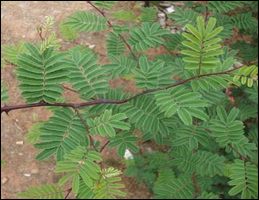
Khadira is one of the skin benefitting herbs. It balances Kapha and Pitta doshas and has cold potency. This herb is categorized under Kandughana groups of herbs which means that it relieves itching and pruritus.
Khadira herb acts as detoxifier, antipruritics, anti-allergic, blood purifier, anti-oxidant and anti-inflammatory properties.
How to Use?
Bathing water prepared with khadira herb is very useful in reducing dermatitis symptoms.
5. Triphala
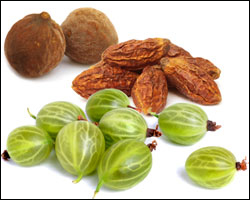
It is an herbal blend of three herbs: Amla (Emblica officinalis), Haritaki (Terminalia chebula) and Vibhitaki (Terminalia bellirica): Triphala is considered as one of the best anti-oxidants according to Ayurveda.
In chronic dermatitis symptoms, wash the lesions with Triphala kashayam (water decoction of triphala). It carries all health benefits of triphala.
How to Prepare Triphala Kashayam?
- Take 100 gm. triphala powder in a clean vessel and add about 800 ml of water into it.
- This mixture should be kept for an hour and then boiled over a mild fire till 200 ml of water is left.
- The liquid is then filtered and collected.
- The brown and clear liquid is obtained.
Foods to Avoid during Dermatitis Treatment
- Consumption of non-vegetarian food, milk and milk products.
- Sour foods
- Incompatible foods such as milk and sour fruits, milk and non-vegetarian food.
- Over eating
- Uncooked food
- Packed food items such as biscuits, bread, canned juices etc.



